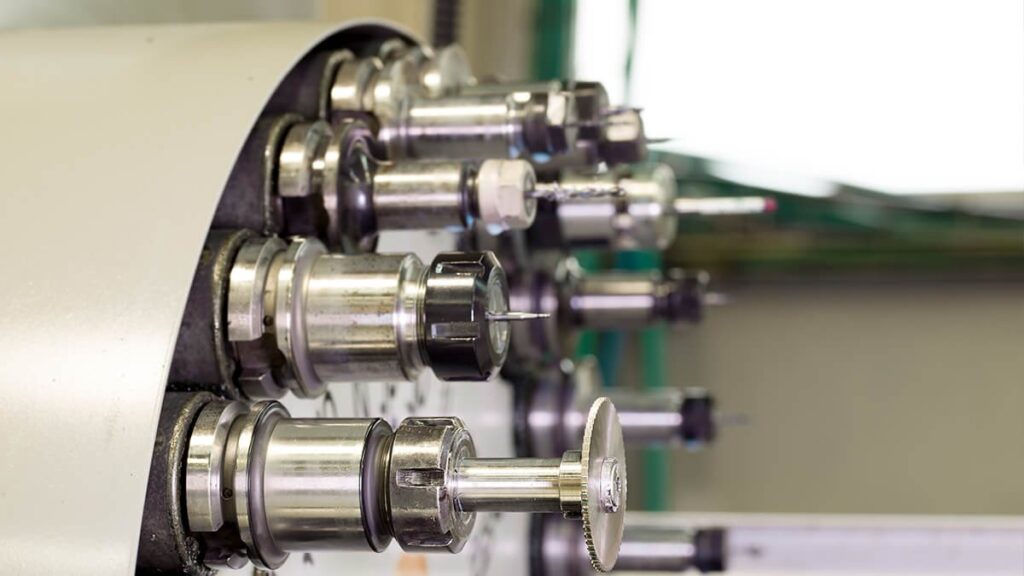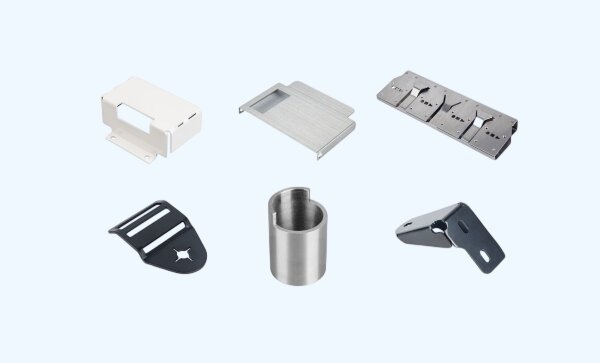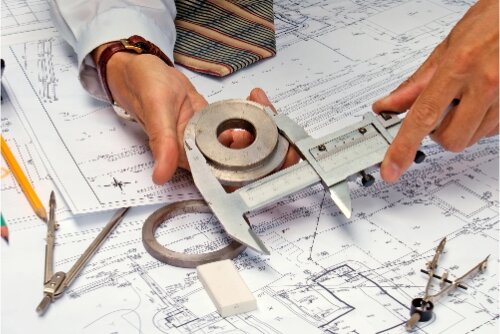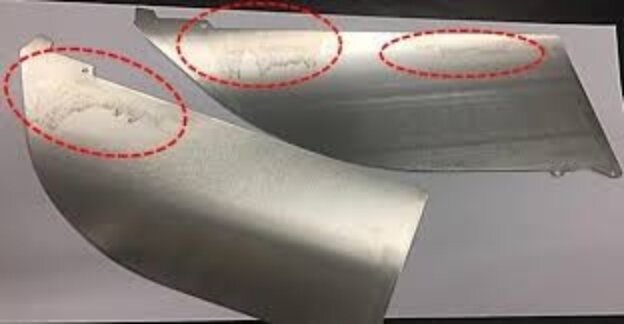Manufacturers often face the challenge of making precise parts while controlling costs and delivery times. Offset machining offers a simple and effective way to adjust cutting paths, improve accuracy, and extend tool life. This approach helps companies reduce errors and produce consistent parts without manual fixes. Engineers and managers can use offset machining to fine-tune production and improve efficiency in daily operations.
This method gives teams more control over machining results and makes it easier to balance speed with accuracy. The following sections will explore offset machining’s methods, benefits, and practical uses.

What Is Offset Machining?
Offset machining is making small changes to the tool’s position in a CNC machine to improve how a part is made. These changes, or “offsets,” adjust the path or depth of the cutting tool during the machining process. They are applied through the machine’s control system, without changing the original G-code program.
Operators often use offsets to correct tool wear, account for material changes, or fine-tune part dimensions during production. This flexible technique helps keep machining accurate and consistent, even under changing conditions.
Types of Offsets
Offset machining relies on several offsets to ensure the tool moves exactly where it should. Each type serves a different purpose and works together to produce accurate parts. Here’s how they work and why they matter.
Tool Offsets
Tool offsets adjust the machine’s understanding of a cutting tool’s exact position. Since tools vary in length and diameter, this offset ensures the machine compensates for those differences. There are two main types:
- Length Offset (Tool Length Compensation): This tells the machine how far the tool tip extends from the spindle. It’s critical for accurate Z-axis movements. Without it, the tool might cut too deep or not deep enough.
- Radius or Diameter Offset (Cutter Compensation): This adjusts the tool path in the X and Y directions to account for the tool’s width. For example, if you’re cutting a profile and don’t use cutter comp, the tool will follow the programmed path, not the part’s edge. Cutter comp lets the tool move slightly left or right of the programmed line, depending on the direction of cut.
Tool offsets are usually entered in the CNC control system’s tool offset table. When a new tool is installed, the operator updates the offset value instead of rewriting the program. This saves time and improves consistency.
Work Offsets
Work offsets define the part’s position on the machine table. They shift the program’s zero point from the machine’s home position to wherever the part is located. This is important because parts don’t always sit in the same spot.
Common work offsets include:
- G54 to G59: These are standard work offset codes in most CNC machines. Each one sets a unique origin point, useful for running multiple parts or fixtures in a single setup.
- G92: Temporarily sets a new zero point, often used in older machines. It’s less common today.
- G10: Allows the programmer to set offsets directly in the program, without manual input at the control panel.
Using work offsets helps reduce setup time. Once the operator sets the part zero point, the program can be reused across multiple setups. If the part shifts slightly, the operator only needs to adjust the offset—not the entire code.
Machine Coordinate System
The machine coordinate system is the base reference of the CNC machine. It represents the home position—the fixed point where the machine initializes when powered on.
You can’t change this coordinate system. It’s used by the control system for internal calculations, like:
- Defining limits and travel range
- Homing the machine
- Tracking absolute positions for safety
Even though you don’t program directly in machine coordinates, all other offsets—tool and work—are measured from this fixed origin. It acts as the foundation for everything else.
Fixture Offsets
Fixture offsets are work offsets, but they’re used when multiple fixtures are mounted on a single table. Each fixture holds a part, and each part has its origin point. With fixture offsets, the operator can program one part and run several copies in different positions by changing the active offset.
This is common in high-volume production or when using a multi-part pallet. It keeps things efficient and lets you switch between parts without stopping the machine.

Equipment and Tools for Offset Machining
Offset machining depends on accurate equipment and reliable tools. Each component contributes to keeping cuts precise and repeatable.
CNC Machines and Control Systems
CNC machines with offset capabilities allow operators to adjust tool paths without rewriting programs. Most use G-code to set offsets like G54 (work) and G43 (tool length). Modern control systems also support multiple offset types and real-time fine adjustments.
Cutting Tools and Holders
Cutting tools vary in length and diameter, so holders must be rigid and precise. Toolholders like ER collets, shrink-fit, or hydraulic chucks help reduce runout and maintain alignment. Proper holders extend tool life and improve cut quality.
Measuring and Calibration Instruments
Precision tools like dial indicators, tool setters, height gauges, and probes help set and verify offsets. Touch probes measure workpiece position. Tool setters check tool length. Calibration ensures the machine interprets offsets accurately for every job.
Offset Machining Processes
These processes allow machinists to fine-tune accuracy during setup and production. Each one ensures the tool cuts the part exactly where and how it should.
Setting Tool Length Offsets
Tool length offsets adjust for the vertical distance between the spindle and the tool tip. Operators measure the tool using a tool setter or a manual touch-off method. This value is then entered into the machine’s offset table. It ensures the tool reaches the correct depth, regardless of size. Without this, cuts may be too shallow or too deep.
Adjusting Workpiece Coordinate Offsets
Workpiece coordinate offsets shift the machine’s zero point to match the part’s position on the table. This is often set using edge finders, probes, or dial indicators. Operators assign the correct work offset (like G54 or G55) based on where the part is clamped. This lets the program run correctly, even if the part isn’t always in the same spot.
Compensating for Tool Wear and Thermal Expansion
Over time, tools wear down, and machine components expand from heat. These changes affect part accuracy. Machinists monitor tool wear and apply small offset changes to keep dimensions consistent. Thermal changes can cause parts to grow or shift. Offsets help compensate for these changes without stopping production or rewriting code.
Advantages of Offset Machining
Offset machining improves the process of making parts by making the setup easier and cutting more accurately. These benefits help shops save time and reduce waste.
Higher Precision and Accuracy
Offsets correct for tool size, tool wear, and part placement. They help the machine cut to exact dimensions even when parts shift or tools change, leading to tighter tolerances and fewer defects.
Flexibility in Multi-Part Production
With multiple work offsets, you can run different parts or setups in one cycle. You don’t need to reprogram the toolpath. Just switch the offset. This is helpful for batch jobs or when using multi-part fixtures.
Reduced Setup Time and Errors
Once offsets are set, there’s no need to manually shift parts or rewrite code, which speeds up changeovers. Operators can also make quick adjustments using the control panel, which reduces mistakes during setup.
Best Practices for Offset Machining
Keeping your process steady and repeatable is key. These habits help reduce mistakes, save time, and boost part accuracy.
Standardizing Offset Procedures
Always use the same steps when setting tool and work offsets. Keep a checklist to guide the setup. Write offset values in the job notes or the machine’s control system. This helps avoid confusion, especially when switching between different operators or machines.
Regular Machine Calibration and Maintenance
Check your machines often. Look for signs of wear, alignment issues, or problems with sensors. Calibrate tools and probes on a regular schedule. A machine in good shape holds tighter tolerances and needs fewer offset changes during a run.
Training Operators and Programmers
Everyone on the shop floor should understand offsets. Train operators to set tools correctly, adjust for wear, and locate the workpiece zero. Make sure programmers understand how offsets affect the machining code. Good training cuts down on errors and keeps things running smoothly.

Offset Machining in Different Industries
Offset machining plays a key role in industries that need high precision, consistent results, and the ability to adapt to different setups. It helps maintain quality while keeping production efficient.
Aerospace Applications
Aerospace parts must be extremely precise. Even small errors can lead to part failure. Offset machining helps adjust for heat changes, tool flex, and complex multi-axis movements. It’s often used for turbine parts, brackets, and structural frames.
Automotive Components
Automotive plants run high volumes and switch parts often. Offset machining allows quick tool and fixture changes without stopping to rewrite code, keeping engine parts, housings, and brackets consistent across long production runs.
Medical Devices
Medical parts must be clean, precise, and repeatable. Offsets help control the size and finish of implants, surgical tools, and equipment housings. They also help adjust for small tool wear, which greatly matters when working on tiny details.
Electronics and Precision Parts
Electronic parts are small and detailed, so there’s little room for error. Offsets help fine-tune cutting paths and tool wear when working on things like slots, ports, or connectors. They also make it easier to run multiple setups on the same machine.
Conclusion
Offset machining is a practical method to improve part accuracy, reduce setup time, and maintain consistency across jobs. Adjusting tool paths and coordinate systems allows for flexible production, faster changeovers, and better control over tool wear and machine variation.
Do you need help with precision-machined parts or want to optimize your production process? Send us your drawings or project details, and our team will provide fast, accurate support tailored to your needs.
Hey, I'm Kevin Lee

For the past 10 years, I’ve been immersed in various forms of sheet metal fabrication, sharing cool insights here from my experiences across diverse workshops.
Get in touch

Kevin Lee
I have over ten years of professional experience in sheet metal fabrication, specializing in laser cutting, bending, welding, and surface treatment techniques. As the Technical Director at Shengen, I am committed to solving complex manufacturing challenges and driving innovation and quality in each project.




